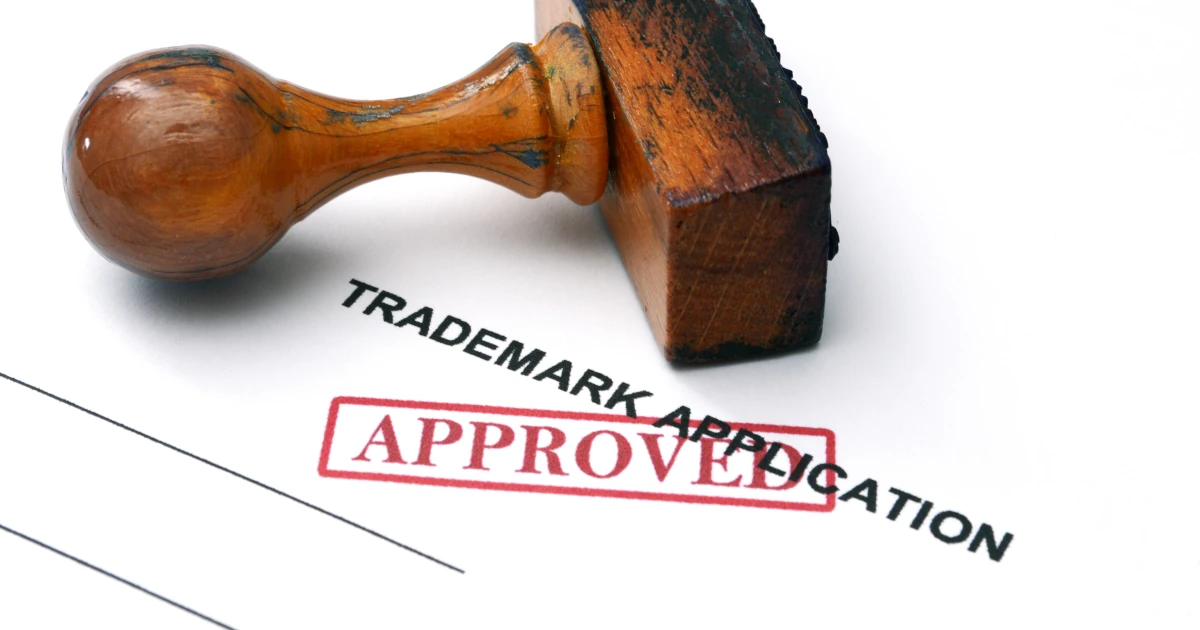
A business name. A logo. A slogan. These are just some of the concepts you can trademark. In doing so, you provide legal protection for your business and preserve its unique identity in the marketplace. But how can you go about obtaining trademark rights in the U.S.?
The entire trademark application process is filled with legal jargon and can be hard to understand, especially for new business owners. This comprehensive guide on trademarking a name walks you through this process in seven easy-to-understand steps.
Business Name Trademark Registration: At a Glance
A trademark is vital for brand identity, ensuring other companies can’t misuse your business name.
Trademarking a business name offers several benefits, including boosting credibility and edging out competitors.
The trademark registration process is rather complex and lengthy and might require a helping hand from third-party services.
What Is a Trademark?
A trademark is a legally recognized word, phrase, symbol, or design that identifies the source of goods and services and distinguishes it from others in the marketplace.[1]
After obtaining trademark protection for your company name, brand name, logo, branding design, or tagline, you can take legal action against those who attempt to use the same or similar names or concepts or misrepresent your brand.
At its core, a trademark embodies your company’s brand identity. When your customers see your trademark, they should instantly connect it to your business and the values it represents. This means that, in a way, a trademark is the public face of your business, offering quality assurance to all your existing and future customers.
Trademark vs. Copyright
Though a trademark is a relatively simple concept, there’s still a lot of confusion about what a trademark is and isn’t. That’s why many people still confuse this concept with copyright.
Trademarks and copyrights offer legal protection of intellectual property, but the difference lies in what they protect.[2]
A trademark primarily protects a brand identity, from the brand name to the design elements associated with that brand. On the other hand, copyright applies to original and tangible artistic, literary, or intellectually created works, such as a book or song lyric.
A copyright protects your exclusive right to reproduce, distribute, perform, or display your created work and prevents others from copying it. If your business relies on creative works, we can help you register your copyright in as little as 7 minutes.
Benefits of Trademarking Your Business Name
Trademarking a business name is a complex process. All the bureaucracy and long waiting can get overwhelming and frustrating, especially for a small business owner. So, why go through with it?
The answer is simple — the benefits of registering a trademark far outweigh the challenges of the registration process.[3] Here are just some of the main advantages to consider:
Protect Your Brand’s Identity
Your brand identity is how the world sees you. Trademarking your business name, arguably the most significant part of this identity, allows you to keep your brand’s reputation intact. No other company can use it for purposes that might be antithetical to your brand’s mission and values.
Gain Exclusive Rights
Trademark your business name, and you gain an instant edge in capturing customer attention in your niche market. This automatically means less competition and a better overall market position.
Avoid Trademark Infringement
Some people believe everything is fair in business, so don’t be surprised if some unscrupulous people try to trick your customers by creating a similar-sounding business name. But also don’t get discouraged, as a trademark offers you an avenue to protect your business from such underhanded moves.
Boost Your Business’ Value and Credibility
Believe it or not, something as simple as the registered trademark symbol (®) next to your business name can do wonders for your credibility. People are more likely to trust and engage with such businesses, as a trademark signals a commitment to protecting your brand identity and maintaining quality standards.

How to Trademark a Name: A Step-by-Step Guide
Knowing how beneficial a trademark is for your business helps you persevere through the trademark application process but does little to alleviate the complexities involved. That’s where this step-by-step guide comes into play.
But even if you get lost somewhere along the way, don’t worry. Our trademark service is designed to navigate all these intricacies for you.
1. Decide if a Trademark is Right for You
Technically, you don’t need a registered trademark to protect your intellectual property to some degree. If you’ve been actively using a business name within your industry and were the first to do so, you might have rights to a common law trademark.
A common law trademark offers limited protection, typically only in the area where you’ve been doing business. Still, this trademark type might be enough for business owners who don’t plan on expanding their brand in the future.
However, if you plan to expand, you’ll need a federal trademark, as this is the only way to legally enforce your rights to the name nationwide.
To apply for this trademark, you’ll turn to the U.S. Patent and Trademark Office (USPTO). This is the only federal agency in charge of registering trademarks. Once you receive approval from USPTO, your business name will be fully and legally protected nationwide.
The emphasis is “nationwide,” as many business owners believe that simply registering a limited liability company (LLC) or a Doing Business As (DBA) trade name is enough to protect their business name. But the truth is that they only prevent other business owners from using your name on a state or even local level.
2. Identify Your Category
After ensuring a trademark is what you need, it’s time to start the application process. But before submitting any files, there’s more research for you to do. First, you should determine what trademark classes your products or services fall under.
The USPTO uses 45 trademark classes to organize goods and services based on their applications. The 34 classes of goods include things like “cosmetics and cleaning products,” “hand tool products,” and “furniture products.” Among the 11 service classes, you’ll find categories like “advertising, business, and retail services” and “restaurant and hotel services.”[4]
Choosing carefully is crucial to protecting your product or service across all relevant classes. Failing to do so leaves an opening for your competitors to use a similar mark for an unregistered class of goods or services.
3. Search for Existing Trademarks
The whole point of trademarking a business name is ensuring no one else gets to use it for the same purposes as you. So, before registering a trademark, you must first ensure it’s available. You can use our Free Trademark Search tool to find the necessary information in seconds.
If you skip this step, your trademark application might be rejected if your desired name is already registered. Even a similar product or service mark can get your application thrown out.
4. Prepare Your Trademark Application
After laying all the groundwork, it’s time to apply for your trademark. Ensuring your trademark application is accurate and has all the necessary information will take you one step closer to a successful trademark registration.
To submit your application, you’ll use the Trademark Electronic Application System (TEAS). Here’s what your application must include:
Information about the business or individual filing for the trademark
The mark you wish to protect
A description about the mark
The trademark classes you want to use the name for and their descriptions
The basis for filing (already “in commerce” or “intend to use”)
The filing fee payment
5. File Your Trademark Registration Application
Once your application is complete, there’s nothing left to do but submit it via TEAS. There are two filing options — TEAS Standard and TEAS Plus. If you qualify for TEAS Plus, you’ll save on filing fees.
Considering how high these fees can get, you should take every opportunity to reduce costs. The trademark application process can get costly because you pay a filing fee per class. The initial application costs between $250 (TEAS Plus) or $350 (TEAS Standard), and each new class you register costs another $250 or $350.[5]
6. Receive USPTO Approval or Rejection
After submitting the application, you’ll receive a filing receipt with a serial number. Use this number to keep tabs on your application.
Your application will first land in the hands of a government attorney in charge of your case. If they find any issue, they’ll send you a letter known as an “office action” explaining why your application has been rejected. Though there are several grounds for rejection, the most common ones include:
Likelihood of confusion with an existing trademark
Improper descriptions
Improper proof of ownership
Approved applications get published in the USPTO’s Official Gazette, an online journal, giving the world a chance to oppose your registration. If someone raises an issue, you’ll probably need a trademark attorney, as you’ll need to appear before the Trademark Trial and Appeal Board. If no one opposes your mark in 30 days, you’re officially a registered trademark owner.
Note that “Intend to Use” trademark owners will receive a Notice of Allowance (NOA), which keeps their mark reserved until they can prove that it is being used in commerce.
The entire trademark application process can last 12 to 18 months, depending on whether your mark is accepted immediately. Be patient, as the initial review process of your application usually lasts the longest.
7. Maintain Your Trademark
Having your trademark approved is undoubtedly a reason for celebration. But don’t forget this trademark doesn’t last forever. You must renew your trademark every ten years to keep it active.[6]
Since a trademark renewal requires several filing fees and lots of paperwork, you can turn to our handy Trademark Registration Renewal service to take the responsibility off your shoulders.

5 Common Trademark Mistakes to Avoid
As important as knowing what to do when trademarking a business name, it’s equally crucial to know what not to do. Keeping these common mistakes in mind will help you minimize the risk of your trademark application getting rejected.
1. Failing to do Thorough Trademark Searches
When registering a name, the more comprehensive your trademark search, the less likely it will be for your name to be similar or easily confusable with an existing trademark. Since this is the leading reason the USPTO rejects trademark applications, you’ll want to be extra careful. Our Free Trademark Search tool can help you do just that.
2. Neglecting to Specify the Right Goods or Services Category
45 classes is a lot, so it’s no wonder business owners often put the wrong ones on their applications. Although the confusion is understandable, this action will likely delay your registration.
Carefully research what category your product or service mark falls under before submitting your application.
3. Submitting Incomplete or Inaccurate Applications
Given how detailed trademark applications are, it shouldn’t be surprising that submitting an incomplete or inaccurate application is one of the most common mistakes. Luckily, it’s also easily fixed — just change or supplement your application as instructed in the office action.
4. Ignoring or Delaying Responses to Office Actions
If there’s a problem with your application and you receive an office action, you only have three months to respond. If you fail to respond to the USPTO within this time period, your application will be deemed abandoned.
To avoid going through the entire process from the beginning, our USPTO Office Action Respon
5. Abandoning a Trademark Due to Lack of Maintenance
Given how much time and effort goes into obtaining a trademark, it would be a pity for you to lose it due to lack of maintenance. Sadly, this does happen quite often. Be sure to renew your trademark every ten years to keep it active.
Ready to Protect Your Business Name?
Armed with this step-by-step guide on trademarking a name, you should be able to complete this process on your own. But if you’re weary of all the complexities involved, don’t worry. Our user-friendly Trademark Registration service will assist you with this time-consuming task.
Frequently Asked Questions
Trademarking a name means establishing legal rights over it and using it exclusively in connection to specific goods or services.
The primary difference between a trademark, copyright, and patent lies in the intellectual property these legal protections cover. Trademarks focus on brand identity (brand name, logo, tagline, etc.), copyrights protect original creative works (books, films, song lyrics, etc.), and patents grant exclusive rights to inventors for their novel and useful inventions, such as a hybrid engine or a pharmaceutical drug.
Trademarking a name has numerous benefits, but the most significant are ensuring your intellectual property is legally protected, enhancing your brand image, and establishing dominance in your niche market.
You have a few options if someone has already trademarked the name you want.
You can do a comprehensive trademark search to check whether the existing trademark covers all the goods and services you intend to offer. If it does, and you’re adamant about using that trademarked name, you can try negotiating with the trademark owner to permit you to use the name.
If that fails, you’ll have to come up with a new name to avoid any legal troubles.
The primary difference between a registered trademark and a common law trademark is the level of protection they offer. A trademark must be filed and registered officially by the USPTO and offers nationwide protection. A common law trademark, on the other hand, requires no formal registration and is only limited to a specific geographic area. As such, this trademark type doesn’t guarantee the same ownership and legal protection as a registered trademark.
The cost of trademarking a name depends on the application form you use and the number of classes you apply for. The basic filing fee for a single class ranges from $250 to $350, depending on the form. But you must also factor in fees for each additional class plus the cost of amendments, extensions, and renewals ($100-$1225 per class).
You need to renew your trademark every ten years. Between the fifth and sixth year after the registration date, you must also submit a Statement of Use to prove that you’ve been actively using the trademark in commerce.
Bibliography
1. United States Patent and Trademark Office. “What Is a Trademark?” Accessed October 4, 2023.
2. United States Patent and Trademark Office. “Trademark, Patent, or Copyright.” Accessed October 4, 2023.
3. United States Patent and Trademark Office. “Why Register a Trademark?” Accessed October 5, 2023.
4. United States Patent and Trademark Office. “Get Ready to Search - Classification and Design Search Codes.” Accessed October 5, 2023.
5. United States Patent and Trademark Office. “How Much Does it Cost? ”Accessed October 5, 2023.
6. United States Patent and Trademark Office. “Keeping Your Registration Alive.” Accessed October 5, 2023.
Trademark Engine is not a law firm and none of the information on this website constitutes or is intended to convey legal advice. General information about the law is not the same as advice about the application of the law in a particular factual or legal situation. Individual facts and circumstances as well as legal principles including but not limited to the ones referenced on this website can affect the outcome of any given situation. The contents of the above blog is the expression of the author and has not been edited or reviewed by Trademark Engine for accuracy or currentness.
Trademark Engine cannot and does not guarantee that an application will be approved by the USPTO, that a mark will be protected from infringement under common US trademark law, or that any ensuing litigation or dispute will lead to a favorable outcome. If you want or have an interest in obtaining legal advice with respect to a specific situation or set of circumstances, you should consult with the lawyer of your choice.
Trademarket Blog
Everything you need to know about starting your business.
Each and every one of our customers is assigned a personal Business Specialist. You have their direct phone number and email. Have questions? Just call your personal Business Specialist. No need to wait in a pool of phone calls.
